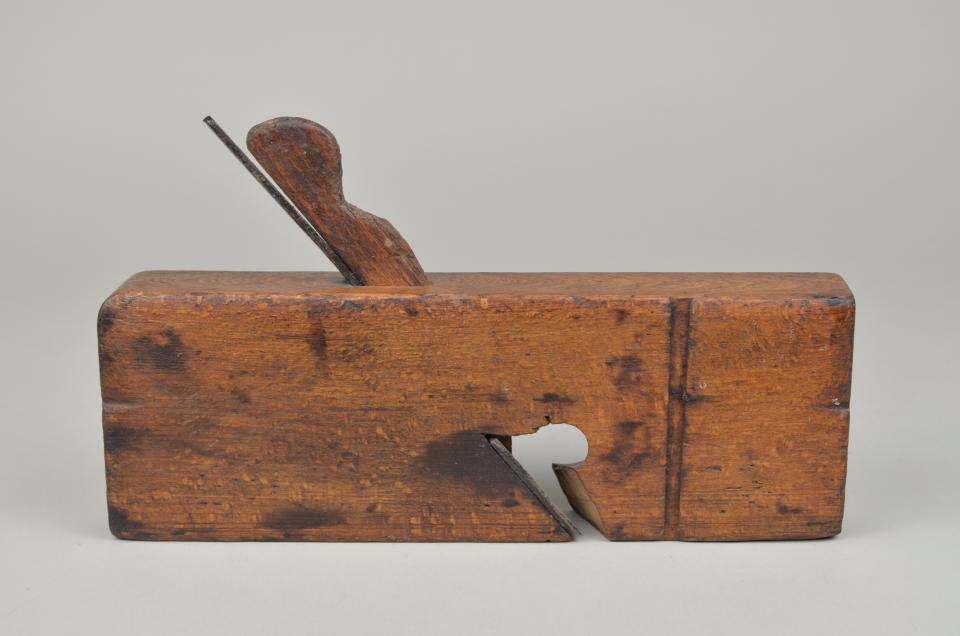
L: 24.1cm W: 3.2cm H: 14.1cm
a- L: 24.1cm W: 3.2cm H: 8.4cm
b- L: 13.7cm W: 2.4cm H: 0.9cm
c- L: 18.6cm W: 0.8cm H: 0.2cm
A wooden skewed rabbet plane consisting of 3 parts.
a- The body is rectangular and made of a dark brown hardwood. The width is consistent throughout. A bell-shaped mouth is exposed at the front and back of the body, with the back opening being wider than the front. A shallow slit runs vertically down the front of the body ahead of the mouth. Stamps on the toe read: "J. KELLOGG/AMHERST MS."; "J.G. AIKENS" (x2); "I BLOWER". Stamps on the heel read: "J.G. AIKENS"; "I BLOWER"; "1 1/2". Inscription on the back body reads "KELL?"; "AMHERST".
Rabbet planes are used to cut straight grooves, or rabbets, into a working piece. They are traditionally used for drawer bottoms or rear walls. They can be used in conjunction with a corresponding tonguing plane, which creates two parallel slits in a piece of wood. These create two pieces that fit together perfectly for joining work. Other names include dado planes, ploughing planes and matching planes when combined with a tonguing plane. An advantage of the skewed iron is that it helps to draw the plane into the corner of the rebate, and it throws the shaving to one side which helps to prevent choking. For extra fine work, capped irons are sometimes used.
